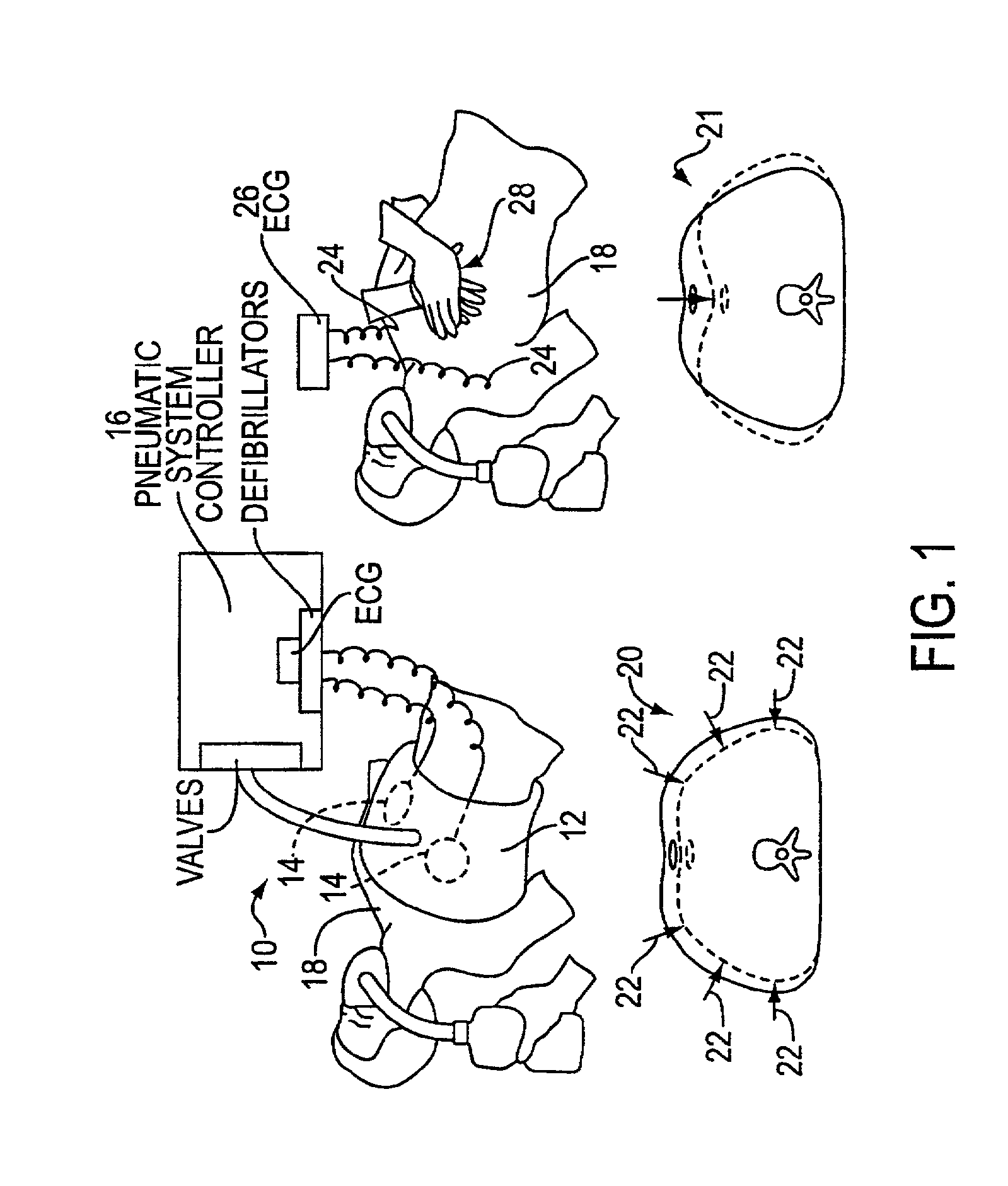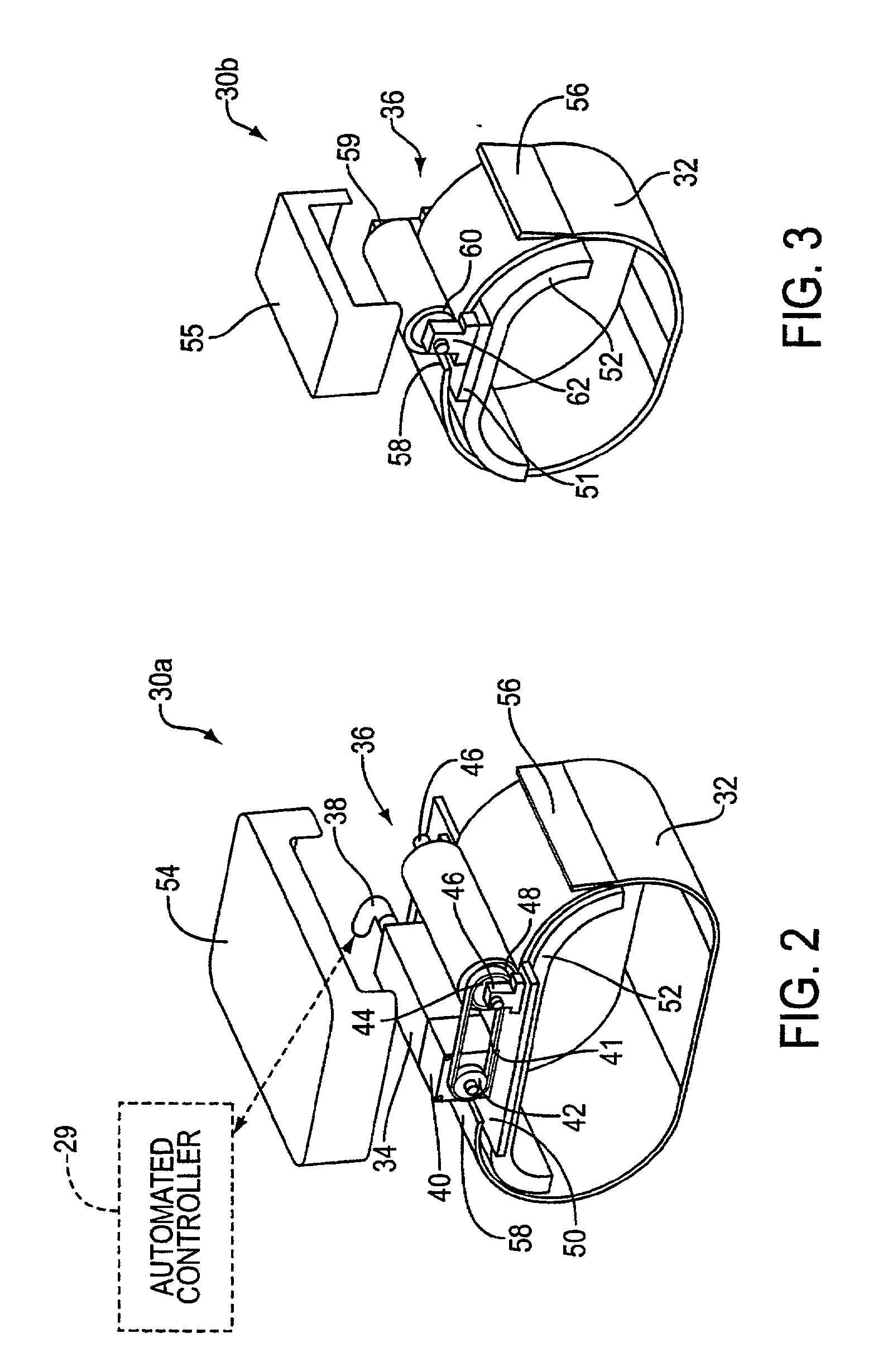Automated chest compression apparatus
- Summary
- Abstract
- Description
- Claims
- Application Information
AI Technical Summary
Problems solved by technology
Method used
Image
Examples
first embodiment
[0035] Referring now to the drawings in greater detail, FIG. 2 shows a CPR device in accordance with the present invention. The illustrated CPR device comprises an automated controller 29 and a compression device 30a for periodically applying a force to a recipient's thorax under control of automatic controller 29. The illustrated compression device 30a comprises a band 32 adapted to be placed around a portion of the torso of the recipient corresponding to the recipient's thorax. A driving sub-system 36 is provided which comprises a driver mechanism for shortening and lengthening the circumference of the band. By shortening the circumference of band 32, radial forces are created acting on at least lateral and anterior portions of the thorax of the recipient.
[0036] In the illustrated embodiment of FIG. 2, the driver mechanism comprises a motorized system. A motor 34 is connected to a gear reducer 40 comprising an output shaft which drives a drive gear 42. Drive gear 42 is coupled to ...
second embodiment
[0045] In the illustrated second embodiment shown in FIGS. 2 and 4, moldable cushion 52 comprises a water-containing bladder (a hydraulic cushion) placed between band 32 and the anterior portion of the recipient's chest. Motor 34 drives chain 41 through gear reducer 40. Chain 41 then drives cylinder 48 which tightens and. loosens the circumferential band 32. A cover is not shown in FIG. 4 in order to show the details of construction in the illustrated embodiment. A band guard (not shown) may be provided which prevents objects such as clothing from being drawn into the mechanism.
[0046] By shortening and lengthening the circumference of band 32, a chest compression force is applied and released. Moldable cushion 52 helps translate the radial forces created on the thorax of recipient 64 to create an increased concentration of anterior radial forces acting on the anterior portion of the thorax of the recipient 64. The length of each compression cycle may be approximately 400 ms. At the ...
PUM
 Login to View More
Login to View More Abstract
Description
Claims
Application Information
 Login to View More
Login to View More - R&D
- Intellectual Property
- Life Sciences
- Materials
- Tech Scout
- Unparalleled Data Quality
- Higher Quality Content
- 60% Fewer Hallucinations
Browse by: Latest US Patents, China's latest patents, Technical Efficacy Thesaurus, Application Domain, Technology Topic, Popular Technical Reports.
© 2025 PatSnap. All rights reserved.Legal|Privacy policy|Modern Slavery Act Transparency Statement|Sitemap|About US| Contact US: help@patsnap.com



